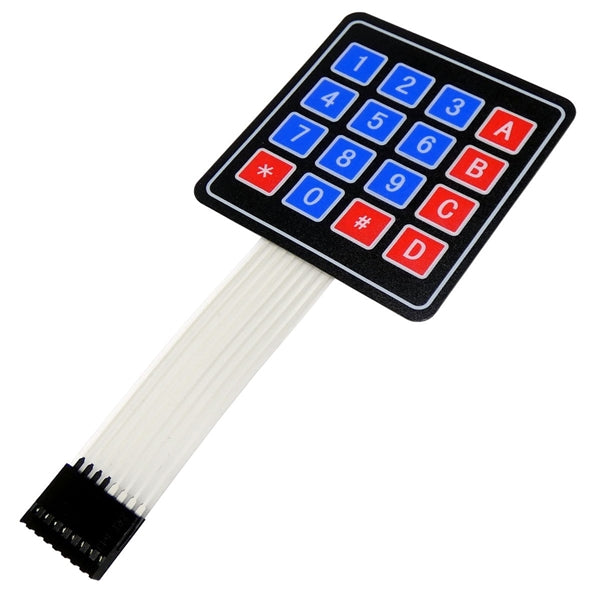The Importance of Membrane Switches in Designing User-Friendly Interfaces
The Importance of Membrane Switches in Designing User-Friendly Interfaces
Blog Article
Why Membrane Layer Switches Over Are Important for Sturdy Control Systems
Membrane layer switches play a pivotal function in making sure the toughness and integrity of control systems across numerous industries. As we check out the multifaceted advantages of membrane buttons, it comes to be obvious that their value goes beyond plain functionality, influencing user experience and operational effectiveness.
Review of Membrane Switches
Membrane switches are versatile and dependable parts generally made use of in numerous electronic control systems. The graphic overlay supplies both functional and aesthetic style, while the spacer layer makes sure that the switches are activated just when pushed.
Membrane buttons are commonly preferred in applications requiring a compact and lightweight style, making them suitable for handheld tools, clinical tools, and industrial machinery. They can be customized to meet specific individual demands and can incorporate numerous functions such as backlighting, tactile responses, and several shades. Membrane layer switches are immune to dust, wetness, and pollutants, making them ideal for settings where longevity is vital.
Advantages of Toughness
In numerous applications, the longevity of membrane changes offers substantial advantages that boost their total performance and integrity. These buttons are created to endure severe atmospheres, making them optimal for use sought after problems such as high moisture, extreme temperature levels, and direct exposure to chemicals. Their durable building and construction assists to avoid damages from physical influence, making sure long-lasting performance and reducing the need for frequent replacements.
In addition, membrane buttons are immune to use and tear, which is essential in applications where regular communication takes place. This resilience converts to decrease upkeep prices, as companies profit from reduced downtime and less service disturbances. Moreover, the encapsulated design of membrane switches secures interior parts from dust and moisture access, more adding to their life expectancy.
Another advantage is their capacity to keep constant performance in time. With a high tolerance for mechanical tension, these switches preserve their responsive comments and electrical integrity, ensuring user complete satisfaction. Ultimately, the durability of membrane switches over not only improves functional effectiveness however additionally promotes self-confidence in their integrity, making them a recommended choice for control systems across numerous markets.
Applications in Various Industries
Sturdy control systems employing membrane layer buttons discover comprehensive applications throughout a variety of markets, each profiting from the unique attributes these buttons offer. In the clinical industry, membrane layer switches are critical for devices such as client screens and diagnostic devices, where integrity and ease of cleaning are critical. Their resistance to wetness and impurities guarantees they keep functionality in clean and sterile settings.
The automobile market leverages membrane switches for control navigate to this site panel controls and infomercial systems, where they provide sleek, low-profile interfaces that enhance individual experience. These buttons are additionally designed to hold up against severe problems, consisting of exposure to extreme temperatures and vibrations.
In industrial setups, membrane layer buttons are frequently utilized in machinery control board, supplying responsive responses and toughness necessary for high-usage applications. Their capacity to withstand chemicals makes them ideal for producing environments where spills and pollutants are frequent.

Customer electronic devices, such as kitchen area devices and remotes, also use membrane buttons for their convenience and cost-effectiveness. On the whole, the versatility and robust nature of membrane changes make them crucial throughout numerous industries, ensuring effective procedure and long life in control systems.
Style and Visual Allure
While functionality is vital, the design and visual allure of control systems outfitted with membrane buttons play a critical function in individual engagement and total experience (membrane switch). The visual design of these switches can substantially influence customer assumption and interaction. A well-designed membrane button boosts the attractiveness of the gadget, making it a lot more enticing to users and cultivating a link between the individual and the item
Membrane layer switches provide a fantastic deal of adaptability in design, permitting manufacturers to tailor graphics, colors, and appearances to align with brand name identification and item aesthetics. Making use of vibrant colors and unique patterns can draw focus, while responsive feedback can reinforce the user's communication with the tool. In addition, the ability to incorporate LED indicators and backlighting into the membrane switch layout offers both functional and aesthetic benefits, boosting visibility and functionality in numerous settings.
Enhancing Customer Experience

Furthermore, membrane layer switches can be tailored to include visual user interfaces, boosting usability by offering details in a clear and user-friendly way (membrane switch). This personalization can include symbols, labels, and color coding that guide individuals through complicated capabilities with simplicity. In addition, their convenience enables assimilation in different atmospheres, ensuring consistent performance whether in commercial equipment or customer electronic devices
The longevity of membrane layer buttons likewise plays a vital duty in user experience. By holding up against rough problems and prolonged use, these switches decrease the likelihood of system failures, hence advertising integrity and user confidence. Eventually, the critical use membrane layer switches not only elevates capability but additionally substantially improves customer communication with control systems, making them a vital element in modern-day layout.
Final Thought

Report this page